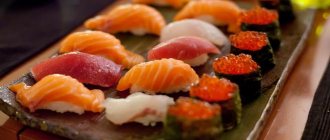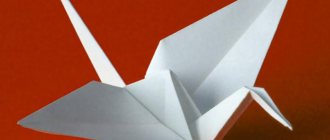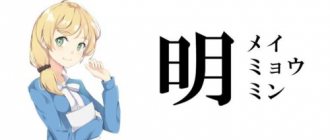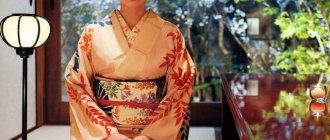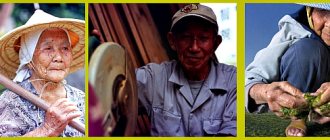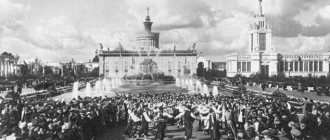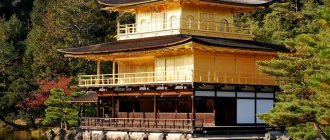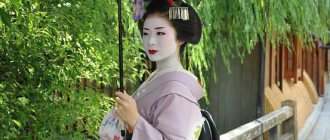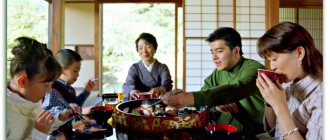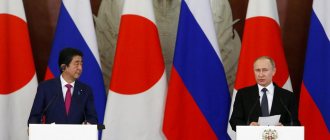History of origin
At the crest of popularity among men are buns called man buns and top knots. You can read in detail about their implementation and features in the article.
They are rooted in the history of the Japanese samurai. Let's figure out what the great-great-grandfathers of the modern style were.
In those days, hairstyle was an undoubted indicator of a person’s status and his belonging to a certain class. Violation and non-compliance of these two criteria were strictly punished.
Mizura Warrior Hairstyle
In translation it means “beans”, which got it because of the shape of the bunch. For a samurai, hair was considered a source of strength, so they did not cut hair, but preferred to style it in a special way. An even parting was made, dividing the head in half, and the hair was tied in a figure eight shape near the ears. Diagram of such a “node”.
Sakayaki
Over time, the samurai's hairstyle changed, and two buns smoothly moved to the back of the head in the form of a single tail or braid, which were placed in a case made of bamboo or a hollow stick. This position helped soften the blows.
There is also an opinion that a special form with a shaved forehead could have appeared due to certain factors:
- undoubted convenience due to the fact that the hair is smoothly removed and does not interfere during the fight;
- fixing the helmet with a tail, which was threaded through a special hole; moreover, the shaved crown did not sweat under the scorching sun;
- natural baldness of the male head.
Schematic representation of possible baldness options:
Ginkgo tree fruit
There are two types of hairstyles, one is earlier (pictured on the left). Her peculiarity was a small “island” of hair on the shaved top of her head. The second appeared later (pictured on the right), it was she who was the progenitor of the popular modern men's ponytails.
You won't believe it, but samurai used accessories made of iron in their hairstyles. They served as additional weapons and were drawn at decisive moments of the battle.
Who are they suitable for?
Japanese men's hairstyles can be called universal due to the variety of options with which both a teenager and an older man will feel confident.
Most haircuts have a slight casual look. With the help of creative clutter on the head, young men can show their individuality. But with this style it will be difficult to imagine an office employee in a suit. Especially for them, modern hairdressers have developed a samurai-style hairstyle. With its help, men can gather all their long strands into a ponytail or a bun at the back of their head. The main feature is easy transformation. This allows us to consider Japanese haircuts universal.
In addition, hairstyles with long or asymmetrical bangs can correct the shape of the face. With their help, a man can hide a high forehead, a protruding jaw, or add softness to harsh facial features.
Haircuts of ancient Japan and their modern analogues
In 1871, a revolutionary decree was issued that allowed soldiers not to carry swords and abolished the obligation to perform special hairstyles. It was at this time that the samurai haircut called Dzangiri Atama appeared.
What species have survived to this day? Let's take a closer look.
Zangirikatto
Option for a long men's haircut with bangs. In the modern world, this form has been supplemented by the fashion for milled or “torn” hair ends. Among the celebrities, Johnny Depp really likes to wear his hair in this style.
Video: How to perform “zangirikatto”
Shokuningari and Shinsaigari
Based on these two types, a wide variety of haircuts have appeared in the modern fashion world, called “Hedgehog”, “Boxing” and “Semi-Boxing”, “Pompadour”, “Canadian” and “Undercut”.
They differ from each other in the length of the crown zone and the sharpness of the transition between the lengths on the sides and the top. Schemes and features of the options in the photo:
- Shokuningari means identical hair over the entire surface of the head.
- Sinsaigari is an elongated hat part.
These popular hairstyles are also worn by celebrities. Justin Timberlake occasionally resorts to a crew cut, and Brad Pitt prefers a Canadian cut.
Theokkakukatto
A very unique execution technique, which is the progenitor of the modern “platform”. It is distinguished by an absolutely even area of hair in the hat area, which is why it acquired such a “talking” name.
Sumo wrestler hairstyles
Body culture in sumo is extremely developed. Interestingly, after retirement, many rikishi manage to return to normal weight within one or two years through a special diet, turning into an ordinary person. In addition to nutrition, an important role is played by massage, water procedures, and sophisticated daily flexibility and stretching exercises, which allow an obese wrestler to easily perform a gymnastic bridge, splits, and similar complex figures. Emphasized attention to the body and constant care for its very unique beauty form an integral part of the life of a rikishi. The most striking confirmation of this cult is probably the colorful hairstyles, to which wrestlers attach no less importance than medieval geishas attached to their intricate coiffures.
Hair gathered into a topknot these days makes it possible to unmistakably identify a sumo wrestler in a crowd.
When Emperor Meiji issued a decree on hair cutting in 1871, only rikishi, thanks to the patronage of high-ranking government officials, escaped the common fate. A high hairstyle, according to sumo wrestlers, not only serves as an attribute of traditional decor, but also absorbs the impact of a fall. Today's famous rikishi, like their predecessors in the Tokugawa era, proudly wear oi-chomage - a magnificent knot in the shape of a gingko tree leaf - on their heads. Their brothers, who have not yet reached the rank of master, are content with a more modest hairstyle - ten-mage. Throughout Japan, there are a little more than thirty real experts in sumo hairstyles, first-class Tokoyama barbers. Most clubs make do with the services of apprentices.
An ancient wisdom says: The head is crowned with a hairstyle, the hips are crowned with kesho-mawashi, the legs are crowned with big toes. If everyone has a fairly complete understanding of the big toes, then kesho-mawashi needs to be discussed in more detail. Spectators - Europeans and Americans - usually mistake kesho-mawashi for an embroidered apron. In reality, this is a very complex structure with a width of 68 cm, a length of more than 6 m and a weight of up to 10 kg. Kesho-mawashi is usually made from gold-woven silk by hand. The work takes at least two to three weeks and costs the customer a tidy sum - up to half a million yen.
Modern samurai hairstyles: implementation and care
Let's go back to the beginning of the article and think about hairstyles again. What united them? Each of them had a ponytail or bun everywhere. Let's consider the basic requirements for their implementation.
Hair length for bun
In order to gather the hair at the back of the head with an elastic band, you will need at least 15 cm. Thus, you will get a small ponytail and this will be enough to start with. For a bun, you will have to grow your curls almost twice as long.
Where to place it?
The standard ponytail is located at the back of the head, although now newfangled trends dictate tying it higher. How not to make a mistake and not lower it too low, turning it into an ordinary low ponytail, and not raise it too high, maneuvering between trends and complete failure with an unfortunate “palm” on the top? The answer is hidden in the photo.
Easy care
- Like almost any hairstyle, the man bun and top knot respect clean washed hair, unless you're a hipster. Representatives of this “subculture” have separate canons of beauty and styling styles. Choose shampoo according to your hair oiliness.
- Be sure to comb your hair well before twisting your samurai ponytail to avoid the formation of kinks and kinks. Give preference to combs with medium-density teeth.
- These hairstyles love easy styling using styling products: gels, mousses and foams.
- Pay attention to balms and conditioners that will remove excess frizz from your curls and make the process of doing your hair easier.
Who is suitable and who should refuse
- Males with the right oval face need not worry; any type of samurai bun will certainly suit them.
- Square and round shapes, with the correct selection of the structure’s location, can visually “lengthen” a little, and proper execution will soften the angular contours.
- Those who have a long, thin face should abandon the ponytail, which will visually lengthen the irregular oval even more.
- Also, people with large facial features, especially a large nose, protruding ears or a high, convex forehead, should not resort to this type of hairstyle. Think better about haircuts with curls flowing down your face, which will remove accents from irregular features and even hide some of them.
- If you are an office worker or a strict reputable company, then it is better to refuse this hairstyle. Probably, styling will not fit into a strict dress code and will give you several unpleasant moments.
Special samurai hairstyles
At the end of the 16th century. samurai wore a special hairstyle with hair shaved at the forehead and on the crown of the head. The hair on the temples, which the bushi deliberately left unshaved, received the name kobin in Edo - a curl left on the side. Kobin was a characteristic feature of the samurai's hairstyle. Craftsmen and traders were required to shave it off. In Kyoto and Osaka, a hairstyle with shaved temples began to be called debitai - a convex forehead. While the kobin hung loosely from the temples, all the remaining hair on the head was gathered back and tied into a thick knot (mage).
During the Bunroku years (December 1592 - October 1596), after the opening of the port of Yokohama, bushi returned to the old customs of tying a large knot of hair on their heads. Townspeople and peasants also joined this fashion, but their hairstyles, despite imitating samurai, were not similar to military mage.
Samurai of this era, as a rule, did not grow a beard and mustache; The cheeks and chin, as well as the hair on the forehead, were shaved daily. However, in earlier times, beards and mustaches were very popular among the bushi, because bearded men were called men with a nasty appearance, and this was considered necessary for a warrior.
Probably, the same was the reason for the production of military half masks with an unpleasant and repulsive facial expression, equipped with a mustache and beard, sometimes of an unnatural color, which were supposed to inspire horror and disgust in the enemy. Ancient descriptions cited the most common type of beard and mustache trimming among warriors: the beard was left only at the tip of the chin, the ends of the mustache went down, like Sugawara no Michizane, and were called tenjinhige.
Two female samurai simple buns
But not only men wear this wonderful style. Girls also look closely at newfangled trends and try to try them on themselves.
Simple spiral
Start by adding volume to your hair. Use foam, hair dryer and comb, doing a little backcombing. Then separate the top part and roll it into a snail shape. At the end, secure with bobby pins and hairpins.
Romantic bun
It differs from the previous method in that the hair must first be curled with a curling iron or any convenient method.
Characteristic features of hairstyles
The traditional Japanese style hairstyle is a bun. This is not an easy option. The hairstyle is rarely repeated by Japanese women themselves, even for special occasions. Although elements of ancient styling are invariably present in most modern options.
A simplified bun, decorated with traditional accessories, remains the most popular styling method. Ponytails and braids were added. Modern girls more often began to walk with their hair down, began to carefully curl their curls, and dye their hair in light shades.
Young people often cut their hair short, do non-standard hairstyles, and dye their strands in bright, unnatural shades. The use of intricate accessories remains unchanged. Combs, sticks, and hairpins are a mandatory attribute of the classic styling of Japanese women.
Self-execution
It is not always possible to create a Japanese hairstyle without outside help. Many variations require skill. Not every professional hairdresser will undertake to make designs in the traditional manner (shimada geisha - give a link to an article about geisha hairstyles).
To begin with, it is recommended to choose a suitable hairstyle variation. Then, it won’t hurt to study the description of the implementation and watch a video recording of lessons with step-by-step actions. Training on your own hair will bring you closer to quickly achieving your goal.
To work you need standard tools:
- comb;
- means of fixation;
- hairpins, invisible.
Particular attention is paid to decorating the hair structure. Actively used:
- traditional sticks;
- hairpins with kanzashi or origami flowers;
- combs;
- ribbons;
- hairpins with decor.
Attention! The final version always looks unusual and catchy. This styling can be easily used for everyday life and holidays.
Japanese hairstyles in the Hyogo style
The hairstyle gained its popularity a long time ago, somewhere at the beginning of the fifteenth century. Its creator was a courtesan, and the hairstyle acquired its name in her honor. This variation features a high, looped ponytail. And the remaining ends were carefully laid around, the resulting loops imitating a bun. The installation principle is the same today.
There is a legend that the city of Kobe became the creator of the style. After people saw this work, they began to demonstrate it to their people in other cities. Also the look of this hairstyle was the first Japanese style since girls started styling their hair this way.
Japanese women's hairstyles
As for women's hairstyles, they were very complex. Women's hairstyles most often consisted of several elements. These were updo hairstyles with buns. When creating them, velvet rollers and pads were used, which were placed under the hair, for example, under hair buns and visually increased their size. As well as various combs, which not only performed decorative functions, but also held the structure of the hairstyle itself.
Japanese painting. Beauty with a fan, 1927. Women's hairstyle.
Women's hairstyles were mostly made from natural hair, but noble ladies could also use wigs. As for women from simple families, they also wore high hairstyles with buns, but simpler and less decorated.
Beauty Walking, Japanese scroll painting, 1880s.
To preserve their hairstyles while sleeping, women used special wooden stands - headrests.
Three beauties in the shade of a cherry tree. Chokosai Eisho. Edo period (late 18th century).
Geishas had the most complex hairstyles. The word geisha (or Geisha) literally translates as a person of art. According to legend, the first geisha was a man. This was a man whose task was to entertain noble Japanese during meals - he had to be able to carry on a conversation. The same became the duties of geishas - to communicate with men at meals, brighten up their leisure time, and maintain a conversation about literature and art.
Accordingly, the geisha themselves must understand the arts. Geishas have a mistress. Mistresses train future geisha girls from early childhood, after which they give them part of their earnings. A geisha can become independent (work without a mistress), but for this she will need to redeem herself. The man with whom she will live can also buy a geisha. But in this case, her “husband” must take care of the geisha’s outfits.
Hour of the Snake. Series Women at various times. Kikugawa Eizan. Edo period (dated 1812).
Geisha hairstyles were the most complex in their design. But their main difference from the hairstyles of ordinary Japanese women were hairpins with tiny fans at the ends, as well as paper flowers in their hair.
The girls wore braids.
The use of cosmetics in Japan was also interesting. Cosmetics were used by everyone in Japan, both men and women. According to the etiquette of the imperial palace, the Japanese had to present themselves whitewashed and rouged to the reception. At the same time, Japanese women’s lips were most often tinted with green paint.
Vintage style hairstyle
Vintage style can be used for both everyday and festive options. It would also be perfect for a masquerade ball for my daughter in kindergarten, provided that the hair is the right length. Add a little makeup, a costume and a head decoration and you'll get a beautiful little Japanese girl. How to do it?
- All hairstyles, not only Japanese ones, should be done on clean, dry hair. We collect the entire mass of hair on the top of the head and backcomb it, also pulling the sides towards the top of the head.
- We comb the hair from below in the same way.
- In order to collect a bun on the top of the head, you first need to use gel and smooth your hair.
- For decoration, you can use decorative hanging elements or wooden sticks with hairpins. Choose jewelry that matches your outfit.
If you want to use it as an option for daily use, it is better to do without bright jewelry.
Japanese hairstyle in Anime style
Anime is the most popular among other types of hairstyles, especially among young people. Even guys are attracted to similar styles, and often repeat them on themselves, highlighting their creativity. All Japanese hairstyle techniques have a certain complexity, and variations of this styling are no exception. The peculiarity of this hairstyle is that the hair constantly needs coloring, that is, it requires careful care and maintenance for a long time. Sometimes some girls use special crayons for coloring; they are gentle in the process.
This style is more suitable for short to medium hair. Technology doesn’t scare anyone, everyone thinks only about the positive option.
The creation technology is similar for short hair, bangs are also required, you can make them torn, curl the ends and dye them straight. Typically, anime is preferred by fans who are passionate about style or by informal teenagers who are trying to attract the attention of other people.
If you are a girl and want to do this type of hairstyle, then get ready to dye your hair frequently, you can combine one or several colors, use a curling iron, and the main rule is long bangs on a certain part of the face.
Japanese hairstyles for every day
Students who love the Land of the Rising Sun prefer several simple everyday hairstyles. Often popular is the square.
Japanese men's hairstyles
The emperor and the nobility wore a hairstyle consisting of hair twisted into plaits and placed in buns on the top of the head. Silk or velvet bags were worn on top of this hairstyle.
Emperor Hirohito (1901-1989), 124th Emperor of Japan. Dzangiri hairstyle.
At the same time, the emperor and members of his family could wear a headdress in the form of tall round caps made of black silk over their hair.
By the way, hats were not popular among the Japanese. The only hats that were most often worn by peasants, since they were forced to protect their heads from the sun, but not only peasants, noble people could sometimes wear these hats, were cone-shaped hats with wide brims made of reed, bamboo or straw. They were worn by both men and women.
Samurai also had their own hairstyle. It was called “samurai hairstyle”. The hair at the front was shaved, from the back of the head and temples it was raised up and rolled up into a rope, which was passed through a small case. The case, in turn, could be made of brocade, bamboo sticks or gilded cardboard.
The faces of the Japanese were traditionally shaved. Only old people wore mustaches and small beards.
Engraving by Utagawa Kuniyoshi from the archives of the Library of Congress. Trade with Europeans.
In the 19th century, Japan experienced a period of so-called Europeanization. After a long period of forced isolation (the Japanese deliberately fenced themselves off from the West and even forbade any European ships, not just military and commercial ones, from sailing to their shores), the next Japanese emperor decides to reform Japanese society along Western lines. His reforms were successful. But they, however, concerned not only the economy, but also the very life of society, as well as the appearance of the Japanese.
In 1871, a decree was issued that erased the class boundaries of Japanese society, for example, it was forbidden to carry swords, and European hairstyles were introduced - short haircuts, which in Japan were called zangiri.
Traditional Japanese cone-shaped hats made from bamboo.
The traditional Japanese children's hairstyle for boys was a hairstyle with a shaved head, which left only small sections of hair above the temples or on the top of the head. This hair was tied with ribbons at the very base.
Monks, like nuns, walked with their heads completely shaved.
